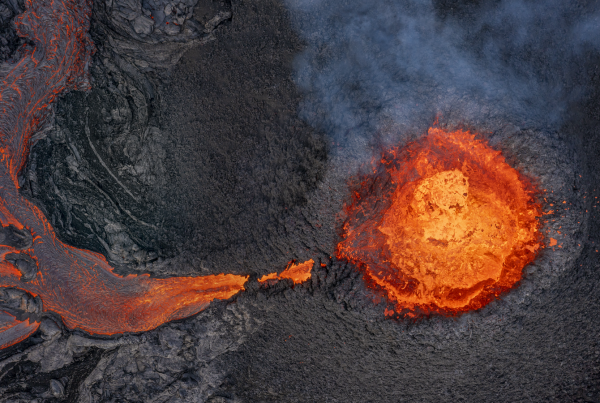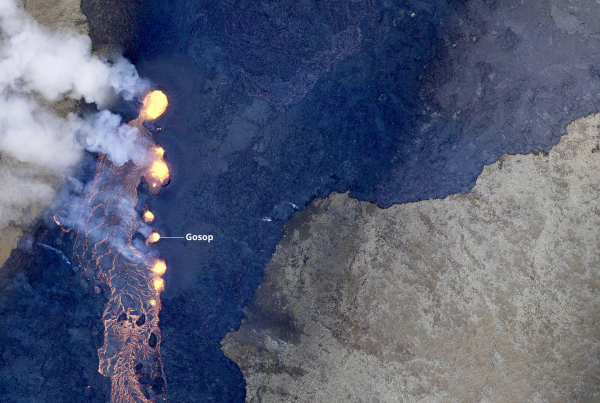
Picture of Askja from the Sentinel-2 satellite on Feb. 2023. The black spot is the part of the crater lake not covered with ice due to heat.
The Askja volcano in NE-Iceland shows surface signs of increased geothermal activity.
The cause is a flow of magma into the magma chamber; currently, the surface uplift at the western edge of the caldera lake is about 50 cm. This movement of magma heats up the crater and simultaneously melts the Ice on the crater-lake. A large area of open water in the ice-covered lake was detected through the Sentinel-2 satellite (photo), in February.
A number of earthquakes are registered every week, most at a depth of 3-5 km but some deeper at around 5-9 km, this movement indicates the increased magma pressure. The earthquakes can be seen on the LAVA Centre’s earthquake map which uses data from the Icelandic Met Office.
The scenario does not indicate that the volcano will erupt, or in that case, where the eruption might start. Commonly, this type of activity can die out and leave magma intrusions cooling in the deep bedrock, but the unrest continues.
A beautiful video made by Kristinn Ingi Pétursson



